Subscribe to:
Post Comments (Atom)
skip to main |
skip to sidebar













































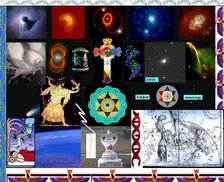



Because they have CHARIOTS of IRON, BARS of BRASS, and GATES of STEEL forged into their minds by the religious (the Pharisees), says the Bible.
In modern terminology, we say someone is HARD headed or stubborn, the myth makers that wrote the Bible used terminologies , such as chariots of iron, bars of brass and gates of steel, to describe the HARD HEADED, BRUTISH, STUBBORN as a JACK ASS ones.
It's ALL in the MIND!! And they had chariots of IRON in their valleys lower levels of consciousness, evil thoughts, and GOD could not remove the inhabitants , THOUGHTS of the city ( the center of your consciousness )
Iron in the bible mythology is THOUGHT, why? Because it weighs you down mentally, it is a heavy burden, especially heavy when other people have ruined your life and you can't stop thinking about it, it will cause you to go mad or kill someone and wind up in Prison, if you keep the iron in the coals stoked with your emotions ( SIN ), then all HELL will break loose and you will go off the deep end.
Failure of modern effort to read the deep message of the Bible is due to the fact that modern scholars stupidly and stubbornly refuse to see that ancient scriptural writing was esoteric or hidden as to its meaning, and allegorical and symbolical as to its method.
The ancients did not use newspaper directness. On the contrary they put up their secret wisdom, vouchsafed to them by the great Sages, in the form of allegories and myths, which were to be taken as fiction in their outward dress, but as the cinematograph of profoundest truth and knowledge in inward sense
By a combination of symbols, nature signs and allegories, often woven into a background of real history, they sought to portray the deepest types of spiritual experience and an intellectual grip on reality.
The Bible has been crassly taken for literal truth about living personages on the stage of mortal history. It has been rendered literally and historically.
This is the most egregious blunder, the most grandiose error, in all human history, this mistaking of spiritual allegorism for literal human narrative.
We are in position to make the unqualified declaration for the first time in the modern age that there is not one iota of history, in the ordinary acceptation of that term, in the Bible from beginning to end.
Some portions of Jewish history are utilized as the base and frame of spiritual myths. The several Judges, Patriarchs and Kings are made to stand for the central figure of the Christos.
Geographical names and historical persons are mentioned but only as characters in the mystic or religious drama. According to Eusebius, one of the three chief formulators of Roman Christian theology, the Gospels of the New Testament are themselves nothing but old dramatic books of the Essenes in pre-Christian days.
The earliest and greatest of the framers of Christian theology, Philo, Clement and Origen, expressly declared it was impossible and an impiety to assert that the logos of God could take the flesh of a human personality.
New research makes it positively clear that the Old Testament narratives are in their entirety rewritings of old Egyptian material, distorted and obscured as it passed through later Hebrew hands.
And Egyptian scripture was never historical. It was spiritual symbology, pure and unalloyed. The weirdest phenomenon of history transpired when later ignorance took the Egyptian constructions and converted them into absurd literal narrative.
And the thinking of the whole world of the civilized West has thus been based on history that never occurred, and the Christian Church has been founded on a set of miracles that were never performed.
The only miracle envisaged in ancient theology was the transformation of human character by the indwelling god, and this spiritual miracle was poetized, dramatized and allegorized in a hundred forms of outward representation, all of which was absurdly taken for personal history later.
This conversion of spiritual into biographical history has made Christianity the instrument of the grossest degradation of sublime ancient truth to which it has ever been subject.
That is to say, that all Christian doctrines present the ancient wisdom in a more literal and hence cruder form of meaning than had ever been done before in national religions.
In the nailing of a personal Jesus on a wooden cross Christianity reduced the glorious drama of the spiritual life to its grossest and most repellent form.
It is the business of enlightened Theosophy to lift this weight of crass literal dogmatism from off the modern imagination and conscience at whatever cost.
The human soul is itself bound on the cross of gross superstition so long as these crude notions dominate the conscious and subconscious thought of modern man.
The light of the true spiritual Gnosis of olden times must be cast into the dark nooks and corners of modern thinking, and disperse the mists of such errant and arrant doctrinism.
It is our declaration, based on years of the most assiduous research, that it is impossible to understand the allegories of the Bible without a knowledge of ancient methods of sacred writing, and of the ancient philosophies.
Our work in this field has been rewarded by a number of the most signal discoveries which are basic for further grasp of the material.
The composers of ancient scriptures were poets, allegorists, dramatists and mythicists. They never wrote literally.
They were in the line of generations of sages and seers who had developed the art of spiritual representation to a point of the utmost ingenuity and complexity,
completely shrouding the intended real meaning under veils of symbolism, which have utterly misled modern scholars who could not pierce the outer veil to read the truth hidden underneath.
Hence the works can not be read without the keys to the myths and reference to the symbols used. The ancients themselves testify plentifully that the scriptures are allegories.
Origen regards the whole Bible as a set of allegories. But the most astonishing declaration to this effect is St. Paul's own statement in Galatians that the whole story of Abraham and Sarah and Hagar is "an allegory."
There is not a scrap of evidence anywhere to identify the Israelites as the historical Hebrews or Jews. The latter simply appropriated the distinction to themselves and fitted their history into the sacred scheme.
As proof of this it is offered that a monument in Egypt contained hundreds of Palestinian place names, afterward localized in the Holy Land of Judea, before the "historical" Exodus from Egypt.
Hence the modern discovery of a town in Palestine bearing the name of a place mentioned in the Bible does not offer a single whit of proof that the Bible is history.
It only proves that the religious formulators of the national epic had given to a certain place a name already found on the uranograph or spiritual chart, much as European explorers gave sacred names such as Salem, Providence, New Haven, Canaan, Newark, Corpus Christi and Santa Fe to new towns when they came to America.
Jerusalem, Egypt, Sodom, Babylon and others are therefore only spiritual names transferred to the map from the celestial chart.
We are prepared to support the statement, then, that the Bible, sadly misinterpreted by its most loyal devotees, is in reality a collection of ancient works that embody in veiled figures the fundamentals of the genuine old wisdom of the hierophants.
One might say indeed, that it is a repository of the great Mystery teaching of early times. In fact it is an assemblage of material comprising the substance of Hermeticism, Gnosticism, Kabalism, Chaldean astrology,
Greek Orphism and Hindu Wisdom, drawn mostly from ancient Egypt. It would not inaptly be described as a book of Platonic Theosophy.
For Plato summed up most of the elements of these systems. To an orthodox churchman it would doubtless seem to belittle the Book to say that it contains nothing but the Platonic philosophy.
But this is only because the churchman knows nothing of the grandeur and rank of the Platonic wisdom.
It is enough to say that it could not be a great book if it did not embody Plato's philosophy.
They (the religious), the churchman, the priestcraft, the soapbox preacher, the street corner evangelist..etal, have....CHARIOTS of IRON in their FORTIFIED places ( their CONSCIOUSNESS )
CHARIOTS OF IRON IN THEIR FORTIFIED PLACES (THEIR MINDS) THEY ARE THE OFF SPRING OF......
TUBALCAIN, (the father of iron works in the Bible). Tubalcain is the LEFT hemisphere of your brain, taking it's cue from the first three chakras, a RIVAL since BIRTH.








































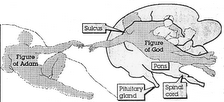







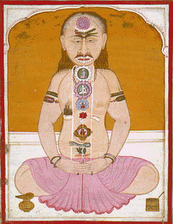


































































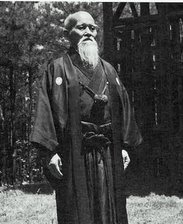







































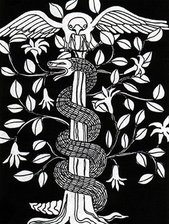








"You're here because you know something. What you know you can't explain. But you feel it. You've felt it your entire life. That there is something wrong with the world. You don't know what it is, but it's there, like a splinter in your mind, driving you mad. You do not realize your own situation. You are in prison because of the lower minds controlling this world. In bondage to the system" NIGHTWATCHMAN
the snake that never talked
be silent, be still, Take NO thought, the biggest secret
TURN off the TV and go WITHIN at 1 min 33 seconds
degrading of women
The MIND is the PRISON
You have been deceived
Does the Bible contradict itself? yes, if you read it literally instead of spiritually
Aquarius, Jesus coming in the clouds
The Rapture So Many Have Missed
The dummed masses are your enemy
belief systems are your enemy, belief becomes the barrier, you cannot see the truth.
gary Moore the dark night of the soul in meditation
For the Zodiac Sign Scorpio (judas) the 8th sign, see the last supper
bad sign srv
surrender
The FIREBIRD and the KEY
Visitors as of Sept 2019 1,689,047
If you will donate $1.00 that would be helpful

Language Translator
Ships Log
Highway men, I'll be back again
Midnight in the desert, Crystal Gayle, another song about meditation












































Blog Archive

The chosen land https://www.youtube.com/watch?v=Gsjy_r58U9w 33 youtube
Crop Circle. The Masonic Eye in the Triangle, here surrounded by 33 rays, representing the 33 Masonic degrees of initiation, corresponding to the journey of the kundalini serpent up the 33 vertebrae of the human spine, the eye being the third eye or Pineal gland.
The total words of the Bible are
788,280 =33 wow!
Jesus died at age 33
The first temple of Solomon stood for 33 years in pristine splendor.
Solomon had seventy thousand carriers and eighty thousand stone cutters in the hills, as well as thirty-three hundred foremen who supervised the project and directed the workmen.
NINE, the number of consciousness in Greek. Jesus caught 153 fish in the net, NINE.
1 kings 7:23 And he made a molten sea, ten cubits from the one brim to the other: it was round all about, and its height was five cubits: and a line of thirty cubits measured its circumference. always drop the zeros when adding numbers in the bible, we find 153 hiding in the bible again. NINE. 144,000 equals nine, 666, rolls down to nine etc....
they "quickened" him! The verb means "to live!" It is so translated 153 times in the Bible!
The verb to pray is used 153 times in the OT and the word darkness, 153 times in the Bible. Also the name of Peter occurs 153 times in the NT.
Pegasus the Winged Horse *). The star is labeled HD 209458 and lies 153 light-years away from us.
However it is found in the close proximity of the star 51 Pegasi. It cannot be a coincidence that this constellation provides us with these insights at this time. As above, so below. The seat of memory in your brain is the hippocampus, and it's a small white sea horse, it is Pegasus in your head.
King David ruled for 33 years in Jerusalem
Jacob had from his first woman Leah 33 children (Gn 46,15) Not possible literally, the poor woman would be dead
YES!, I think I get it now!
What is a JEW? "A Jew is one Inwardly" Romans 2:9
It means one who enters into meditation.
Is Ra El......Isis-Ra-Elohom, the femenine, the masuline, and EL-Spirit or God.
"Is" or "Isis", the Egyptian Goddess, also seen as the Moon Goddess; "Ra", the Egyptian Sun God, and "El", generally meant to signify "God"
The lower mind, the moon, is integrated with the higher mind, the sun, by the spirit or Electromagnetism from above.
Jews are not a race. and Israel is not a country, biblically speaking that is. It's Mythology describing one who has attained the higher, by way of meditation, by becoming a Jew (one who meditates), one INWARDLY.
The chosen land is the human brain, but first the Canaanites have to be driven out. The lower mind quality is overturned, and then....
"And be not conformed to this world: but be ye transformed by the renewing of your mind, that ye may prove what is that good, and acceptable, and perfect, will of God". Rom 12:2. Jeu from the Coptics, became Jew, one who emanates. See IEOU
What would the Palestinians do, if they read that the holy land is mythology describing the human brain? And that the word Is Ra El means ISIS Ra Elohim.
And a Jew is one INWARDLY, one who meditates, that's the chosen one. Would they tell all their Palestinian friends, and create a world uprising against the false Is Ra El?
Remember the following; "Then Peter opened his mouth, and said, Of a truth I perceive that God is no respecter of persons: But in every nation he that feareth him, and worketh righteousness, is accepted with him" (Acts 10: 34, 35). God doesn't choose a RACE of people, also the nations are WITHIN you twain.
Right from the bible itself telling you where the nations are.
But who read it and understood it.
"In your limbs lie nations twain, Rival races from their birth; One the mastery shall gain, The younger o’er the elder reign - Old Testament (on “Jacob” and “Esau”) Genesis 25:23
Jacob is the RIGHT hemisphere of your brain and ESAU is the left hemisphere, the two NATIONS within you, rivals since birth.
IN YOUR LIMBS LIE THE NATIONS TWAIN, WOW!
NOTHING TO BELIEVE ANYMORE, THIS IS THE TRUTH, RIGHT FROM YOUR OWN BIBLE.
Sorry, the Jews who live in the country Israel, the Bible is not talking about you, and it's the TRUTH! God doesn't choose a race of people.
See Jacobs Wrestling Match!
http://members.shaw.ca/ther.watchman/jacob.htm
Also see where is the holy land on the links page, explained in detail
And Prime Minister Golda Meirs Zionist arrogance:
'This country exists as the fulfillment of a promise made by God Himself. It would be ridiculous to ask it to account for its legitimacy.' See the problem folks.
Ah, it's all in the Old Testament? Gotcha, right, well do as you like then.
But! It's all MYTHOLOGY , so who is Is Ra El, and where is the PROMISED land?
Herein, Lies the problem with reading mythology LITERALLY
When the LORD your God hands these nations over to you and you conquer them, you must completely destroy them. Make no treaties with them and show them no mercy.' Deuteronomy 7:1-4
What we are seeing in Gaza, and have seen so many times, both there and in the Lebanon, is merciless Old Testament slaughter: cold, calculated, heartless slaughter.
The bible mythology, although it is mythology, the country if Israel takes the whole thing literally, and we see the results of that in Palestine and Gaza, heartless, cold cruel slaughter, just like the mythological god of the Old testament, a murderer from the beginning.
'So they sent twelve thousand warriors to Jabesh-gilead with orders to kill everyone there, including women and children. "This is what you are to do," they said. "Completely destroy all the males and every woman who is not a virgin".' Judges 21:10-24
'Then I heard the LORD say to the other men, "Follow him through the city and kill everyone whose forehead is not marked.
Show no mercy; have no pity! Kill them all - old and young, girls and women and little children. But do not touch anyone with the mark. Begin your task right here at the Temple".
The total words of the Bible are
788,280 =33 wow!
Jesus died at age 33
The first temple of Solomon stood for 33 years in pristine splendor.
Solomon had seventy thousand carriers and eighty thousand stone cutters in the hills, as well as thirty-three hundred foremen who supervised the project and directed the workmen.
NINE, the number of consciousness in Greek. Jesus caught 153 fish in the net, NINE.
1 kings 7:23 And he made a molten sea, ten cubits from the one brim to the other: it was round all about, and its height was five cubits: and a line of thirty cubits measured its circumference. always drop the zeros when adding numbers in the bible, we find 153 hiding in the bible again. NINE. 144,000 equals nine, 666, rolls down to nine etc....
they "quickened" him! The verb means "to live!" It is so translated 153 times in the Bible!
The verb to pray is used 153 times in the OT and the word darkness, 153 times in the Bible. Also the name of Peter occurs 153 times in the NT.
Pegasus the Winged Horse *). The star is labeled HD 209458 and lies 153 light-years away from us.
However it is found in the close proximity of the star 51 Pegasi. It cannot be a coincidence that this constellation provides us with these insights at this time. As above, so below. The seat of memory in your brain is the hippocampus, and it's a small white sea horse, it is Pegasus in your head.
1260 days/=9
153 fish/=9
3 1/2 days/=9, do the math
666/=18=9
Mt:20:5: Again he went out about the sixth and ninth hour, and did likewise.
Mt:27:45: Now from the sixth hour there was darkness over all the land unto the ninth.
Mt:27:46: And about the ninth hour Jesus cried with a loud voice, saying, Eli, Eli, lama sabachthani? that is to say, My God, my God, why hast thou forsaken me?
That's the giving up of the EGO
The Gospel of the Holy Twelve:82:26:When Jesus therefore had received the vinegar, he said, "It is finished". And he bowed his head, and gave up the ghost. And it was in the ninth hour. The ghost is the EGO death.
Acts:3:1: Now Peter and John went up together into the temple at the hour of prayer, being the ninth hour.
Acts:10:3: he saw in a vision evidently about the ninth hour of the day an angel of God coming in to him, and saying unto him, Cornelius.
Acts:10:30: And Cornelius said, Four days ago I was fasting until this hour; and at the ninth hour I prayed in my house, and, behold, a man stood before me in bright clothing,
the sun: 864 000 =8+6+4 = 18 = 1+8 = 9
the moon: 21,600 =2+1+6 = 9
the earth: 7,920 =7+9+2 = 18 = 1+8 =9
The body/ has 9 openings
It takes 2,160 years to traverse one sign of the zodiac=9
A great year is 25,920 years reduces to 9
24 hours = 144 minutes, also the measure of a man in the bible/, and the measure of the temple. reduces to 9
It takes 9 months of pregnancy/ to create a full term human baby, you have 9 openings in your body.
nine/ the number of waking human consciousness in ancient mythology
2 sam: And there was yet a battle in Gath, where was a man of great stature, that had on every hand six fingers, and on every foot six toes, four and twenty in number; and he also was born to the giant. add the numbers then you will get the lowest number, NINE, it's the EGO 666=18=9, clever those writers.
Goliath; "six cubits and a span", a span is 9 inches, a cubit is 18 inches, put it all together, 6 cubits 6x9=72=9 and a span 9 (9 + 9 or x 9 will always reduce to NINE, human consciousness.
Gen 5:27 And all the days of Methuselah were nine hundred
Sisera." Judges 5:17-19"A considerable number of Canaanite Kings participated in the alliance having at their disposal 900 chariots of iron" You always drop the zeros in biblical numerology
the nine muses etc...etc...
King David ruled for 33 years in Jerusalem
Jacob had from his first woman Leah 33 children (Gn 46,15) Not possible literally, the poor woman would be dead
YES!, I think I get it now!
What is a JEW? "A Jew is one Inwardly" Romans 2:9
It means one who enters into meditation.
Is Ra El......Isis-Ra-Elohom, the femenine, the masuline, and EL-Spirit or God.
"Is" or "Isis", the Egyptian Goddess, also seen as the Moon Goddess; "Ra", the Egyptian Sun God, and "El", generally meant to signify "God"
The lower mind, the moon, is integrated with the higher mind, the sun, by the spirit or Electromagnetism from above.
Jews are not a race. and Israel is not a country, biblically speaking that is. It's Mythology describing one who has attained the higher, by way of meditation, by becoming a Jew (one who meditates), one INWARDLY.
The chosen land is the human brain, but first the Canaanites have to be driven out. The lower mind quality is overturned, and then....
"And be not conformed to this world: but be ye transformed by the renewing of your mind, that ye may prove what is that good, and acceptable, and perfect, will of God". Rom 12:2. Jeu from the Coptics, became Jew, one who emanates. See IEOU
What would the Palestinians do, if they read that the holy land is mythology describing the human brain? And that the word Is Ra El means ISIS Ra Elohim.
And a Jew is one INWARDLY, one who meditates, that's the chosen one. Would they tell all their Palestinian friends, and create a world uprising against the false Is Ra El?
Remember the following; "Then Peter opened his mouth, and said, Of a truth I perceive that God is no respecter of persons: But in every nation he that feareth him, and worketh righteousness, is accepted with him" (Acts 10: 34, 35). God doesn't choose a RACE of people, also the nations are WITHIN you twain.
Right from the bible itself telling you where the nations are.
But who read it and understood it.
"In your limbs lie nations twain, Rival races from their birth; One the mastery shall gain, The younger o’er the elder reign - Old Testament (on “Jacob” and “Esau”) Genesis 25:23
Jacob is the RIGHT hemisphere of your brain and ESAU is the left hemisphere, the two NATIONS within you, rivals since birth.
IN YOUR LIMBS LIE THE NATIONS TWAIN, WOW!
NOTHING TO BELIEVE ANYMORE, THIS IS THE TRUTH, RIGHT FROM YOUR OWN BIBLE.
Sorry, the Jews who live in the country Israel, the Bible is not talking about you, and it's the TRUTH! God doesn't choose a race of people.
See Jacobs Wrestling Match!
http://members.shaw.ca/ther.watchman/jacob.htm
Also see where is the holy land on the links page, explained in detail
And Prime Minister Golda Meirs Zionist arrogance:
'This country exists as the fulfillment of a promise made by God Himself. It would be ridiculous to ask it to account for its legitimacy.' See the problem folks.
Ah, it's all in the Old Testament? Gotcha, right, well do as you like then.
But! It's all MYTHOLOGY , so who is Is Ra El, and where is the PROMISED land?
Herein, Lies the problem with reading mythology LITERALLY
When the LORD your God hands these nations over to you and you conquer them, you must completely destroy them. Make no treaties with them and show them no mercy.' Deuteronomy 7:1-4
What we are seeing in Gaza, and have seen so many times, both there and in the Lebanon, is merciless Old Testament slaughter: cold, calculated, heartless slaughter.
The bible mythology, although it is mythology, the country if Israel takes the whole thing literally, and we see the results of that in Palestine and Gaza, heartless, cold cruel slaughter, just like the mythological god of the Old testament, a murderer from the beginning.
'So they sent twelve thousand warriors to Jabesh-gilead with orders to kill everyone there, including women and children. "This is what you are to do," they said. "Completely destroy all the males and every woman who is not a virgin".' Judges 21:10-24
'Then I heard the LORD say to the other men, "Follow him through the city and kill everyone whose forehead is not marked.
Show no mercy; have no pity! Kill them all - old and young, girls and women and little children. But do not touch anyone with the mark. Begin your task right here at the Temple".
'Ezekiel 9:5-7
The parallels are endless between the bloodthirsty 'God' of the Old Testament and the actions of the heartless, soulless, Artificial Israel of today.
Everyone of these verses can be explained in the light of Mythology, because that's what Israel is, it's pure MYTHOLOGY.
Zionism is NOT the fault of our good Israeli friends who work hard to fight the Zionist movement in their own country, we honor all the people of Israel who are opposed to the slaughter of Palestinians, it's only the minority who seek to dominate and control other human beings.
Many Jews know that the bible is MYTHOLOGY, but they keep silent about it.
Mythology is needed to protect the language of symbols from the ravages of the Church and Religious barbarians. This is the reason all great religious scriptures were written in symbols, dark sayings and allegory.
The writings in the bible are symbolic, meant for advanced students (this may seem odd to you but it is so). In the wrong hands, the texts are almost indecipherable.
Depending on what the person is inwardly determines what the person will get from the sacred text. So for the average person that is internally e.g. violent (whether or not he is so externally matters not), will see violence. Hence, the innumerable confusion of the masses.
This text was not meant to become public, the texts were part of the ancient mystery schools, outsiders were not allowed to see nor understand, because the average person is base and living off of their lower animal instincts.
Where is the REAL Holy Land?http://thehiddenlighthouse.blogspot.com/2009/03/spare_4211.html



Why does everyone read the Bible LITERALLY?
Because they have CHARIOTS of IRON, BARS of BRASS, and GATES of STEEL forged into their minds by the religious (the Pharisees), says the Bible.
In modern terminology, we say someone is HARD headed or stubborn, the myth makers that wrote the Bible used terminologies , such as chariots of iron, bars of brass and gates of steel, to describe the HARD HEADED, BRUTISH, STUBBORN as a JACK ASS ones.
It's ALL in the MIND!! And they had chariots of IRON in their valleys lower levels of consciousness, evil thoughts, and GOD could not remove the inhabitants , THOUGHTS of the city ( the center of your consciousness )
Iron in the bible mythology is THOUGHT, why? Because it weighs you down mentally, it is a heavy burden, especially heavy when other people have ruined your life and you can't stop thinking about it, it will cause you to go mad or kill someone and wind up in Prison, if you keep the iron in the coals stoked with your emotions ( SIN ), then all HELL will break loose and you will go off the deep end.
Failure of modern effort to read the deep message of the Bible is due to the fact that modern scholars stupidly and stubbornly refuse to see that ancient scriptural writing was esoteric or hidden as to its meaning, and allegorical and symbolical as to its method.
The ancients did not use newspaper directness. On the contrary they put up their secret wisdom, vouchsafed to them by the great Sages, in the form of allegories and myths, which were to be taken as fiction in their outward dress, but as the cinematograph of profoundest truth and knowledge in inward sense
By a combination of symbols, nature signs and allegories, often woven into a background of real history, they sought to portray the deepest types of spiritual experience and an intellectual grip on reality.
The Bible has been crassly taken for literal truth about living personages on the stage of mortal history. It has been rendered literally and historically.
This is the most egregious blunder, the most grandiose error, in all human history, this mistaking of spiritual allegorism for literal human narrative.
We are in position to make the unqualified declaration for the first time in the modern age that there is not one iota of history, in the ordinary acceptation of that term, in the Bible from beginning to end.
Some portions of Jewish history are utilized as the base and frame of spiritual myths. The several Judges, Patriarchs and Kings are made to stand for the central figure of the Christos.
Geographical names and historical persons are mentioned but only as characters in the mystic or religious drama. According to Eusebius, one of the three chief formulators of Roman Christian theology, the Gospels of the New Testament are themselves nothing but old dramatic books of the Essenes in pre-Christian days.
The earliest and greatest of the framers of Christian theology, Philo, Clement and Origen, expressly declared it was impossible and an impiety to assert that the logos of God could take the flesh of a human personality.
New research makes it positively clear that the Old Testament narratives are in their entirety rewritings of old Egyptian material, distorted and obscured as it passed through later Hebrew hands.
And Egyptian scripture was never historical. It was spiritual symbology, pure and unalloyed. The weirdest phenomenon of history transpired when later ignorance took the Egyptian constructions and converted them into absurd literal narrative.
And the thinking of the whole world of the civilized West has thus been based on history that never occurred, and the Christian Church has been founded on a set of miracles that were never performed.
The only miracle envisaged in ancient theology was the transformation of human character by the indwelling god, and this spiritual miracle was poetized, dramatized and allegorized in a hundred forms of outward representation, all of which was absurdly taken for personal history later.
This conversion of spiritual into biographical history has made Christianity the instrument of the grossest degradation of sublime ancient truth to which it has ever been subject.
That is to say, that all Christian doctrines present the ancient wisdom in a more literal and hence cruder form of meaning than had ever been done before in national religions.
In the nailing of a personal Jesus on a wooden cross Christianity reduced the glorious drama of the spiritual life to its grossest and most repellent form.
It is the business of enlightened Theosophy to lift this weight of crass literal dogmatism from off the modern imagination and conscience at whatever cost.
The human soul is itself bound on the cross of gross superstition so long as these crude notions dominate the conscious and subconscious thought of modern man.
The light of the true spiritual Gnosis of olden times must be cast into the dark nooks and corners of modern thinking, and disperse the mists of such errant and arrant doctrinism.
It is our declaration, based on years of the most assiduous research, that it is impossible to understand the allegories of the Bible without a knowledge of ancient methods of sacred writing, and of the ancient philosophies.
Our work in this field has been rewarded by a number of the most signal discoveries which are basic for further grasp of the material.
The composers of ancient scriptures were poets, allegorists, dramatists and mythicists. They never wrote literally.
They were in the line of generations of sages and seers who had developed the art of spiritual representation to a point of the utmost ingenuity and complexity,
completely shrouding the intended real meaning under veils of symbolism, which have utterly misled modern scholars who could not pierce the outer veil to read the truth hidden underneath.
Hence the works can not be read without the keys to the myths and reference to the symbols used. The ancients themselves testify plentifully that the scriptures are allegories.
Origen regards the whole Bible as a set of allegories. But the most astonishing declaration to this effect is St. Paul's own statement in Galatians that the whole story of Abraham and Sarah and Hagar is "an allegory."
There is not a scrap of evidence anywhere to identify the Israelites as the historical Hebrews or Jews. The latter simply appropriated the distinction to themselves and fitted their history into the sacred scheme.
As proof of this it is offered that a monument in Egypt contained hundreds of Palestinian place names, afterward localized in the Holy Land of Judea, before the "historical" Exodus from Egypt.
Hence the modern discovery of a town in Palestine bearing the name of a place mentioned in the Bible does not offer a single whit of proof that the Bible is history.
It only proves that the religious formulators of the national epic had given to a certain place a name already found on the uranograph or spiritual chart, much as European explorers gave sacred names such as Salem, Providence, New Haven, Canaan, Newark, Corpus Christi and Santa Fe to new towns when they came to America.
Jerusalem, Egypt, Sodom, Babylon and others are therefore only spiritual names transferred to the map from the celestial chart.
We are prepared to support the statement, then, that the Bible, sadly misinterpreted by its most loyal devotees, is in reality a collection of ancient works that embody in veiled figures the fundamentals of the genuine old wisdom of the hierophants.
One might say indeed, that it is a repository of the great Mystery teaching of early times. In fact it is an assemblage of material comprising the substance of Hermeticism, Gnosticism, Kabalism, Chaldean astrology,
Greek Orphism and Hindu Wisdom, drawn mostly from ancient Egypt. It would not inaptly be described as a book of Platonic Theosophy.
For Plato summed up most of the elements of these systems. To an orthodox churchman it would doubtless seem to belittle the Book to say that it contains nothing but the Platonic philosophy.
But this is only because the churchman knows nothing of the grandeur and rank of the Platonic wisdom.
It is enough to say that it could not be a great book if it did not embody Plato's philosophy.
They (the religious), the churchman, the priestcraft, the soapbox preacher, the street corner evangelist..etal, have....CHARIOTS of IRON in their FORTIFIED places ( their CONSCIOUSNESS )
*******
Belief is comfortable, convenient; it dulls. It is a kind of drug; it makes you a zombie. A zombie can be a Christian, \Hindu, Mohammedan - but they are all zombies, with different labels.
And sometimes you get fed up with one label, so they change the label; the Hindu becomes a Christian, the Christian becomes a Hindu, a new label, a fresh label, but behind the label the same belief system.
Destroy your beliefs. Certainly it will be uncomfortable, inconvenient but nothing valuable is ever gained without inconvenience.
osho
MYTH
The story of Eden is not fact but myth and there is myth in the Bible.
Myth is not to be understood as something that was once believed by a population to be true that has now been proven false.
The literary form of myth is the telling of an imaginative story using symbols to explain things beyond our human understandings and comprehension.
While a myth may be imaginative, it speaks and reveals the TRUTHS of the thing it is explaining.
Of course all ancient peoples understood that these were myths, its only relatively recently that we have grown in ignorance and started to believe they were facts which we now claim to have dis proven.
No ancient peoples ever believed their myths were true. Its obvious. When you know the truth about something obviously you do not set it out so people can understand it.
It makes perfect sense to hide this truth in a story that can be misinterpreted by even your own followers.
Bill Donahue
CHARIOTS OF IRON IN THEIR FORTIFIED PLACES (THEIR MINDS) THEY ARE THE OFF SPRING OF......
TUBALCAIN, (the father of iron works in the Bible). Tubalcain is the LEFT hemisphere of your brain, taking it's cue from the first three chakras, a RIVAL since BIRTH.

Somewhere in the Matrix
"Do NOT be a minister of the LETTER (Literal) for the LETTER (Literal) Killeth", says the Bible. Here are 28 more verses that warn against reading the Bible LITERALLY.
This little Blog is about trying to help shed some light on the truth concerning religion, the truth about the ancient Mythological texts such as the bible. The entire Bible is ancient Mythology, and not to be read LITERALLY at all.
Then why do they, the preachers, voodoo priest craft, and TV evangelists teach the LITERAL interpretation, when the very book they read from says not to.
The sleeper must awaken.
He who loses the cares and desires of this world will lose his life, why, because when you stay stuck in the materiality of life, you have no REAL spiritual function, the bible calls this the dead, the spiritually dead.
But when you are ready to hate this life, the physical reality only with all of it's sorrows and suffering, then you will gain it, because you will seek the inner path of meditation, this is called eternal life, eternal life is not some fairyland place where your physical body lives forever, bodies die.
Joseph Campbell said that the ancient writers refer to eternity an living in the now in the moment.
Edgar Cayce said that what religion calls G-D is really ELectricity/Magnetism
We live in an electric world/universe. Our cities are visible from space at night, blazing with electric lights. The electricity courses invisibly in the darkness over great distances along thin power lines. We find electricity indispensable. Nature does the same since all matter is electrical. Yet astronomy is stuck in the gas-light era, unable to see that stars are simply electric lights strung along invisible cosmic power lines that are detectable by their magnetic fields and radio noise.
http://www.holoscience.com/wp/
plural matrices (mâ´trî-sêz´, màt´rî-) or matrixes
1.A situation or surrounding substance within which something else originates, develops, or is contained.
This little Blog is about trying to help shed some light on the truth concerning religion, the truth about the ancient Mythological texts such as the bible. The entire Bible is ancient Mythology, and not to be read LITERALLY at all.
Then why do they, the preachers, voodoo priest craft, and TV evangelists teach the LITERAL interpretation, when the very book they read from says not to.
Are you a JEW? you can be, it's easy, you must seek within, you must meditate and shutdown the thoughts of the mind.
Romans 2:29; But he is a Jew, which is one inwardly ( one that seeks within in meditation); and circumcision is that of the heart ( cutting away of the physical desires, separating from the thoughts of the mind, this is circumcision ), in the spirit ( spiritually ), and not in the letter ( not LITERALLY ); whose praise is not of men ( the mind ), but of God ( the higher consciousness, the higher light, not from minds of men ).
It screams from every page, not to read it Literally, because snakes, do not talk, donkeys do not talk, people do not get up out of graves and walk, burning bushes do not speak, at least not when you're sober. These things do happen in Mythology though.
Lets not forget what Thoth of the Emerald tablets says;
Thoth/Hermes the Atlantean
"Preserve them and guard them, hide them in symbols, so the profane will laugh and renounce. In every land, form ye the mysteries. Make the way hard for the seeker to tread. This is exactly the Bible..
And don't forget the Quran;
See that the Quran is also veiled to the profane and ignorant goat herders, all of the ancient texts with the exception of Buddhism is HIDDEN knowledge, Hidden in plain sight.
“We lay veils upon their hearts lest they understand it” Qu’an (17:46)
What Muslim understands this? Only the Sufis do, no one else gets it.
See the other verses from the Bible to see the reality.
THE BIBLE AS A SYMBOL
Our first order of business in this quest is to see if we can justify considering the Bible as symbolic rather then literal. We must use the Bible itself.
"And even if our gospel is veiled, it is veiled to those who are perishing". 2 cor.4:3
Yes it is , it is VEILED to those ignorant religious masses that read the spiritual words, dark sayings, LITERALLY!! That's the letter that KILLS!
It's mystical, it's hidden, it is OCCULT! The bible is all about the human psyche and how it works, written in occult words. Of course the religious institutions want you to believe them and read the bible Literally, keeping you decoupled from the truth.
Mark explains it all here, please listen. Listen for at least the first 20 minutes, then you will get it.
Copy and paste URL in your browser.
https://www.youtube.com/watch?v=_8e41iXn4qI
1.2Corinthians 3:6 Who also hath made us able ministers of the new testament; not of the letter, but of the spirit: for the letter killeth, but the spirit giveth life. So here is the Bible itself telling us not to take it literally. The LETTER KILLS, it surely does, it kills LITERALLY!!
2. Galatians 4:24 Which things are an allegory: the definition of a myth includes the term allegory. Here again the Bible tells us it is symbolic.
3. Matthew 13:34 All these things spake Jesus unto the multitude in parables; and without a parable spake he not unto them: The Bible is saying that all of Jesus statements were symbolic.
4. Mark 4:11 And he said unto them, Unto you it is given to know the mystery of the kingdom of God: but unto them that are without, all these things are done in parables:
5. Psalm 78:2 I will open my mouth in a parable: I will utter dark sayings of old: Here the Bible states that GOD speaks in parables . And what are dark sayings of old. Obviously they are symbolic statements.
6. In the Book of Proverbs describes wisdom. It explains how one becomes wise. Proverbs 1:6 To understand a proverb, and the interpretation; the words of the wise, and their dark sayings. Dark sayings is mytholoy
7. And even if our gospel is veiled, it is veiled to those who are perishing. 2 cor.4:3
8. But their minds were made dull, for to this day the same veil remains when the old covenant is read. It has not been removed, because only in Christ is it taken away. 2 cor. 3:14
9. We should serve in the newness of the Spirit and not in the oldness of the letter." (Romans 7:6)
10. Then said I, Ah Lord GOD! they say of me, Doth he not speak in parables? EZ:20 Here God speaks in parables
11. 1Cr 2:7 But we speak the wisdom of God in a mystery, [even] the hidden [wisdom], which God ordained before the world unto our glory. Here it says god ordained the hidden wisdom, even before the world
12. Eze. 17:2 Son of man, put forth a riddle, and speak a parable unto the house of Israel. God orders riddles
13. Jdg.14:19 And the Spirit of the LORD came upon him, and he went down to Ashkelon, and slew thirty men of them, and took their spoil, and gave change of garments unto them which expounded the riddle.
And his anger was kindled, and he went up to his father's house. Here it says god was pleased when they cracked the riddle, and rewarded them.
14. Proverbs 25:2 It is the glory of GOD to conceal a thing: but honor of kings is to search out a matter. And here its Gods honor to conceal things, and make you figure it out.
15. 2Cor.4:3,4 "But if our gospel be hid, it is hid to them that are lost: In whom the god of this world hath blinded the minds of them which believe not, lest the light of the glorious gospel of Christ, who is the image of God, should shine unto them."
16. Isaiah 9,10 And he said, Go and tell this people, hear ye indeed, but understand not; and see ye indeed, but perceive not. Make the heart of this people fat, make their ears heavy, and shut their eyes
17. Col 1:26 Even the mystery which hath been hid from ages and from generations, but now is made manifest to his saints.
18. JOB 27:11 I will teach you by the hand of God: that which is with the Almighty will I not conceal.
19. MAT 11:25 At that time Jesus answered and said, I thank thee, O Father, Lord of heaven and earth, because thou hast hid these things from the wise and prudent, and hast revealed them unto babes.
20. psalm 89 might be fulfilled which was spoken by the prophet, saying, I will open my mouth in parables; I will utter things which have been kept secret from the foundation of the world."
21. Proverbs 1:6 To understand a proverb, and the interpretation; the words of the wise, and their dark sayings.
22. 1 cor 2:7 But we speak the wisdom of God in a mystery, even the hidden wisdom, which God ordained before the world unto our glory:
23. IS. 48:6 Thou hast heard, see all this; and will not ye declare it? I have shewed thee new things from this time, even hidden things, and thou didst not know them.
24. Eziekel 3:5 For thou art not sent to a people of a strange speech and of an hard language, but to the house of Israel;
25. exodus 4:11 And the LORD said unto him, Who hath made man's mouth? or who maketh the dumb, or deaf, or the seeing, or the blind? have not I the LORD?
26. exodus 4:12 Now therefore go, and I will be with thy mouth, and teach thee what thou shalt say.
27. "You are in error because you do not know the Scriptures or the power of God." (Jesus Christ - The Holy Bible: Matthew 22:29)
28. Hebrews 5:13 For every one that useth milk is unskilful in the word of righteousness: for he is a babe. 5:14 But strong meat belongeth to them that are of full age, even those who by reason of use have their senses exercised to discern both good and evil.
Here God is saying that his word is like milk to you, as a babe must drink milk before it can eat solid food. God is saying his word is for the the one who is ready for meat, in other words, when one is ready for the deeper meaning, this is the meat, for the one full of age (wisdom). Reading Gods word literally is MILK, it is for the unskillful, and they will not understand.
Here the fact that this is all consciousness is made clear. It says to know the mystery of the Kingdom of God. Where is the Kingdom of God ? .
(Luke 17:21 Neither shall they say, Lo here! or, lo there! for, behold, the kingdom of God is within you.) The statement concludes by saying that "unto them that are without".
Outside of the meditative state. Outside of the inner realm of consciousness where exists the Kingdom of God.
Here we see that God speaks in mysteries, riddles and parables, He puts riddles in peoples mouths, he shuts their eyes and ears, he sends strange and hard speeches, he sends dark sayings, and that is Gods glory that he conceal a thing, he imparts secret wisdom and make you and I search it.
His word is as milk to the unskillful, without age (reason).
There's no doubt that the bible is showing you that, you can't read it at face value, you have to look for the deeper meaning, the secret wisdom, the dark sayings, the hidden and so forth.
The problem with Christianity as a whole, including all the pastors and TV evangelist pay no attention to these verses and read and teach the bible literally, which is an abomination unto god.
The word is Mysterious and you have to search it out, the truth is not given to the vain, to the once a week jesus mercenary.
There's no doubt is there, about what is being said here, the Bible was written in a certain metaphorical, symbolic language of old, which is mythology.
Now I didn't say that the bible is written in dark sayings, the bible does, I didn't say don't read it Literally, the bible says it, I didn't say that everything Jesus said was a parable, the bible says it, I didn't say that the god of the OT speaks in parables, the bible says it. I didn't say that the bible is a mystery book, the bible says it is, I'm simply pointing it out to you, so YOU can get understanding, and begin to read the bible spiritually and NOT Literally, as you have been shown by the above verses.
Words of wisdom from the Scriptures of Islam
Of course these verses from the Quran are purely myth just like the Bible, but they don't know that.
Kill those who join other gods with God wherever you may find them. Holy Qu'ran, Sura ix, 5-6
Those who believe fight in the cause of God. Holy Qu'ran, Sura iv, 76
Say to the Infidels: if they desist from their unbelief, what is now past shall be forgiven; but if they return to it, they have already before them the doom of the ancients! Fight then against them till strife be at an end, and the religion be all of it God's. Holy Qu'ran, Sura viii, 39-42
Let those who fight in the cause of God who barter the life of this world for that which is to come; for whoever fights on God's path, whether he is killed or triumphs, We will give him a handsome reward. Holy Qu'ran, Sura iv, 74
Your wives are a tilth for you, so go into your tilth when you like, and do good beforehand for yourselves. Holy Qu'ran, Sura ii, 223
When you meet the unbelievers, strike off their heads; then when you have made wide slaughter among them, carefully tie up the remaining captives. Holy Qu'ran, Sura xlvii.4
ڿڰۣ☸¸.•*´¨ Ƹ̵̡Ӝ̵̨̄Ʒ•●♥❤
If I had access to smart bombs and missiles, there wouldn't be one church or mosque standing, the Vatican would be the first to go.
I'm growing tired of these childish god followers, the heck with them all, with their prophets and holy men.
Religions are the most destructive force in the universe. They are all pure FICTION
If Jesus were here, he would help me load the rocket launcher.
"And Jesus went out, and departed from the temple: and his disciples came to him for to show him the buildings of the temple."
"And Jesus said to them, See you not all these things ( physical worship bldgs)? truly I say to you, There shall not be left here one stone on top of another, that shall not be thrown down."
It's a good thing that G-d does NOT answer prayers.
If G-d or the g-ds listened to the prayers of human beings, then all humankind would quickly perish, since they constantly pray for many evils to befall one another.
EPICURUS
"Religious symbolism" as applied to man's understanding of God changed every 2,160 years and along with that was man's understanding of God and His revelation and message. The "path" intended for mankind's salvation was being written and elaborated upon by God in the blackboard in the Sky.
This is the message that God has consistently spoken to mankind from Heaven since the creation of the Universe. Man is to reflect this Cosmic Order of Heaven by following and implementing the same Divine Patterns and Cycles that operate "Above" and bring them into being "Below". As Above, So Below
Mythically...(personification of the Sun and its path through the Zodiac and the 4 seasons of the year)
The sleeper must awaken.
He who loses the cares and desires of this world will lose his life, why, because when you stay stuck in the materiality of life, you have no REAL spiritual function, the bible calls this the dead, the spiritually dead.
But when you are ready to hate this life, the physical reality only with all of it's sorrows and suffering, then you will gain it, because you will seek the inner path of meditation, this is called eternal life, eternal life is not some fairyland place where your physical body lives forever, bodies die.
Joseph Campbell said that the ancient writers refer to eternity an living in the now in the moment.
Edgar Cayce said that what religion calls G-D is really ELectricity/Magnetism
We live in an electric world/universe. Our cities are visible from space at night, blazing with electric lights. The electricity courses invisibly in the darkness over great distances along thin power lines. We find electricity indispensable. Nature does the same since all matter is electrical. Yet astronomy is stuck in the gas-light era, unable to see that stars are simply electric lights strung along invisible cosmic power lines that are detectable by their magnetic fields and radio noise.
http://www.holoscience.com/wp/
matrix
matrix (mâ´trîks) nounplural matrices (mâ´trî-sêz´, màt´rî-) or matrixes
1.A situation or surrounding substance within which something else originates, develops, or is contained.
"And I, behold, I have taken the Levites from among the children of Israel instead of all the firstborn that openeth the matrix among the children of Israel: therefore the Levites shall be mine; "(KJV)
Bibliography
The following is a list of Authors and researchers in the field of Mythology and Mysticism. This blog would not be possible, if I the Blogger had not stood on the shoulders of these giants to learn the great truths these learned men gave the world.
Giants such as: Bill Donahue, Joseph Campbell, Alvin Boyd Kuhn, Gerald Massey, Geoffery Hodson, Francis Schovel Shinn, Robert Collier, Bristol, Richard Bach, Jonathan Livingston Seagull, Hilton Hotema, George Carey, Maxwell Jordan, Helena Blavatsky, Bob Smith (figures of speech) and many more.
This blog has bits and pieces borrowed from hundreds of websites, we wish to thank the webmasters of all the websites where a sentence, a line or paragraph was used, to enhance the overall knowledge found on this blog.
In some cases permission was granted to use certain information, in some cases the webmasters of some sites never returned emails. Certain information was necessary to add to the body of this work, to make it more understandable.
We appreciate all those webmasters and their diligent work concerning their own websites. And if a webmaster that may stumble upon this simple blog, we ask that you allow your knowledge or graphics to remain for the good of all.
I do not wish to give light to myself, only that a seeker can come to this blog, and glean some truth for his/her self.
That is the sole purpose of this blog.
It is not possible to sight all references by individual sentences, lines or paragraphs, but when remembered, quotations will be used.
Do we really live in the Matrix? Yes!












About Me
- Nightwatchman
- US Navy, Military Sealift Command Subic Bay Philippines
preacher with guns and holy machine guns

























































































































































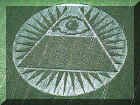
Buddhism
Even the advent of Buddhism is mythologized in the tale of the Emperor Ming. His dream of a golden man who could fly led him to dispatch messengers to Afghanistan to bring back the Buddhist scriptures.
On The Long Search, a BBC television series surveying world religions, host Ronald Eyre inquired of a Zen abbot, “Does the Buddha exist?” The answer was, “For those who need the Buddha to exist, he exists. For those who do not need him to exist, he does not exist.”
The real and relevant Buddha is the Buddha-nature latent in all sentient beings. Can we imagine a Christianity willing to make the same admission about Christ? “If you meet the Christ on the road to Emmaus — kill him.”
Buddha MYTH
Satan, and Satan alone, best represents the harshness of reality.
As much as the book Jesus and Buddha deals with issues that leave to chance how Christianity and Buddhism are rendered by the individual, collective, and historical imagination, it comes down to being a spiritual guide for those who seek moral instruction and inner strength from the best of what both religions have to offer. In coming together "in an encounter of the spirit in the West," as Jack Kornfield writes, Buddha's and Jesus' words are designed to lead the faithful on the same "path of liberation from our anxious grasping, resurrection into a new way of being, and transformation into the compassionate life."